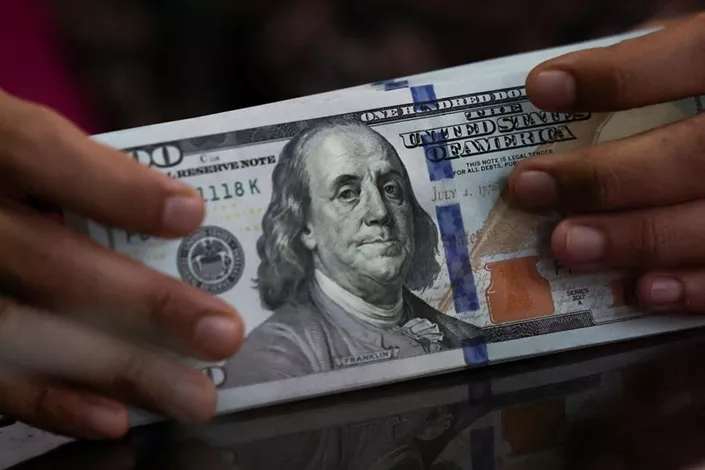The U.S. dollar faced a sharp decline on Friday, as growing doubts about the U.S. economy led investors to pull back from American assets, favoring safer options like the Swiss franc, Japanese yen, euro, and gold.
Gold reached a record high, while the Swiss franc surged to its strongest level in over a decade. Meanwhile, U.S. stocks saw a sharp reversal of their recent rally, triggered by President Donald Trump’s unexpected decision to pause tariff hikes on multiple trading partners. This move had initially boosted market sentiment but quickly lost momentum in a volatile 24-hour period.
Long-term U.S. Treasuries were also hit, pushing 10-year yields to rise at their fastest pace since 2001. Trump’s temporary tariff relief, however, did not apply to China, where he imposed even harsher duties, raising tensions between the U.S. and China.
The Chinese yuan, which had hit a record low in offshore trading earlier in the week, rebounded sharply, gaining strength on Wednesday and Thursday, before slipping slightly in Friday’s session.
Chris Weston, head of research at Pepperstone, noted the growing trend of investors selling off U.S. assets and shifting capital into safe havens. “There has been a pronounced ‘sell U.S.’ vibe, with the USD losing its safe-haven appeal,” Weston said.
U.S. Treasury Secretary Scott Bessent defended the tariff relief, claiming it was part of the plan to bring countries to the negotiation table. However, Trump later acknowledged that market panic following his April tariff announcements played a role in his decision to ease the pressure.
Trump’s inconsistent approach to trade measures since returning to the White House in January has caused confusion among global leaders and business executives, who now struggle to predict market conditions due to the ongoing uncertainty.
The U.S. dollar dropped 1.2% to 0.81405 Swiss francs, marking its lowest level since January 2015. It also fell 1.1% to 142.88 yen, the weakest since September 30. The Canadian dollar saw a similar rise, with the dollar dropping 0.5% to a five-month low of C$1.3910. The euro gained 1.7%, reaching $1.13855, its highest level since February 2022.
The U.S. dollar index, a measure of the greenback against a basket of major currencies, declined 1.2%, falling below the 100 mark for the first time since July 2023.
In the offshore market, the U.S. dollar weakened by 0.3% to 7.2903 yuan, but later recovered to 7.3211. Over the previous two sessions, the dollar had dropped 1.5%.
Gold saw a significant boost, climbing 1.4% to an all-time high of $3,219.23 per ounce.
In the bond market, the benchmark 10-year Treasury yield rose nearly 10 basis points to 4.488%.
Brent Donnelly, president of Spectra Markets, suggested that the dollar’s decline could continue. “I think we are entering a pure ‘sell USD’ phase,” he said. “Rate differentials are losing their impact on the dollar for the first time in my career.”
Related Topics:


